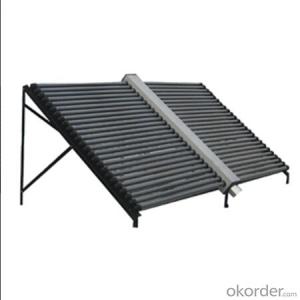Solar Plus Inverter
Solar Plus Inverter Related Searches
100w Solar Panel With Inverter Best Solar Panel Inverter 5000 Series Cast Aluminum Plate Portable Solar Panel Inverter First Solar Series 6 Module 12 Volt Solar Panel Inverter Plastic Solar Lanterns Buy Solar Panel Inverter Solar Panel Inverter Cost Solar Panel Without InverterHot Searches
Type Of Inverter For Solar Types Of Inverter For Solar Used Solar Inverter For Sale Inverter Size For Solar System Solar Edge Inverter For Sale 5kw Solar Inverter For Sale Solar Inverter For Sale Solar Inverter For Battery Solar Inverter For Split Ac Solar Inverter For Laptop Solar Inverter For Fridge Solar With Inverter Price Solar Inverter With 2 Battery Solar Inverter Price In China Best Solar Inverter In China Solar Inverter Price In Dubai Solar Inverter Price In Uae Solar Inverter Price In Kenya Solar Inverter Price In Kerala Solar Hot Water Collectors For SaleSolar Plus Inverter Supplier & Manufacturer from China
Okorder.com is a professional Solar Plus Inverter supplier & manufacturer, offers integrated one-stop services including real-time quoting and online cargo tracking. We are funded by CNBM Group, a Fortune 500 enterprise and the largest Solar Plus Inverter firm in China.Hot Products
FAQ
- The role of a solar inverter in a solar-powered desalination system is to convert the direct current (DC) electricity generated by the solar panels into alternating current (AC) electricity that can be used to power the desalination equipment. The inverter ensures efficient and safe power conversion, allowing the system to effectively utilize the energy generated by the solar panels for the desalination process.
- When choosing the right voltage rating for a solar inverter, it is important to consider the voltage of the solar panels and the electrical grid. The voltage rating of the inverter should match or be compatible with both of these sources. Additionally, factors such as the maximum power output of the solar panels and the electrical load should also be taken into account to ensure optimal performance and efficiency of the inverter.
- Yes, a solar inverter can be used with battery storage. In fact, it is commonly used in solar energy systems to convert the direct current (DC) power generated by solar panels into alternating current (AC) power that can be used by household appliances or stored in batteries for later use. The solar inverter plays a crucial role in managing the flow of electricity between the solar panels, batteries, and the electrical grid, ensuring efficient energy utilization and storage.
- The role of a solar inverter in a solar-powered electric vehicle charging station is to convert the direct current (DC) generated by the solar panels into alternating current (AC) that can be used to charge electric vehicles. The inverter ensures that the electricity produced by the solar panels is compatible with the charging station and the electric vehicles, allowing for efficient and safe charging.
- Is the grid side of the grid and the inverter?
- The grid load side of the grid is the grid. The inverter is an important part of the PV grid-connected system and can not be regarded as an external load. Photovoltaic power generation system is included in both grid and off-grid.
- Yes, a solar inverter can be used in a commercial solar system. In fact, it is an essential component as it converts the direct current (DC) generated by the solar panels into alternating current (AC) that can be used to power commercial buildings and equipment. The solar inverter ensures efficient and reliable energy conversion, making it suitable for both residential and commercial solar installations.
- Yes, a solar inverter can be monitored remotely. Many modern solar inverters have built-in monitoring capabilities that allow users to track the performance and energy production of their solar system from a remote location. This can be done through software applications or web-based platforms that provide real-time data and analytics, enabling users to monitor the system's efficiency, diagnose issues, and optimize its performance without physically being present at the location of the inverter.
- Yes, a solar inverter can be used with a ground-mounted solar array. A solar inverter is responsible for converting the DC (direct current) electricity produced by the solar panels into AC (alternating current) electricity that can be used to power homes or businesses. Whether the solar array is ground-mounted or roof-mounted, the solar inverter plays a crucial role in converting the electricity for use in the desired location.













































